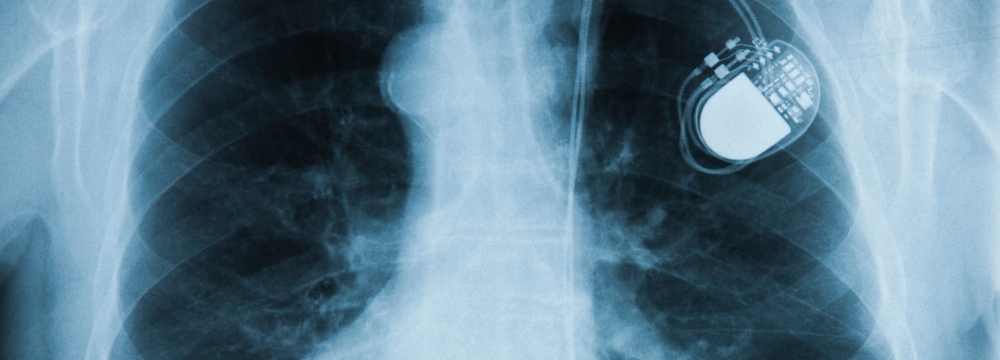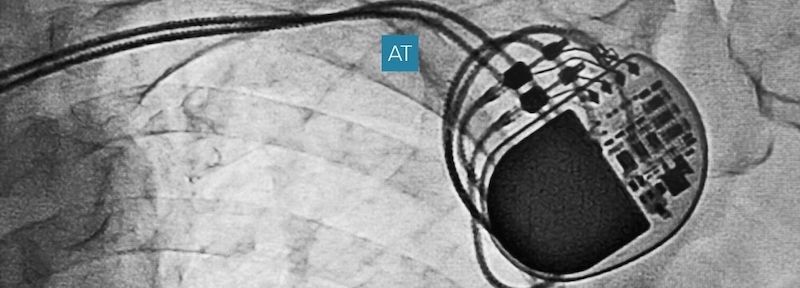Pacemaker

Pacemakers have been the gold standard in treating slow heart rhythms known as bradycardia for decades. Most of us know someone with a pacemaker. This tiny device offers patients a life-changing and lifestyle-restoring option for what would otherwise be a debilitating and chronic condition like congestive heart failure. Implanted in a very safe and straightforward procedure, traditional pacemakers have few risks. However, one of the most significant concerns of a conventional pacemaker is the malfunction or breakage of the wires that connect the pulse generator/battery to the heart itself. Further, while traditional pacemaker technology has improved to the degree that they are smaller than ever, it still requires a bulky implant under the skin.
Newer technology in leadless pacing has allowed electrophysiologists like Dr. Tordini to implant a tiny chip-like device into a ventricle using advanced minimally invasive catheter technology. Not only is the pacemaker itself completely hidden, but it functions in a very similar fashion and with the same longevity as a traditional pacemaker, but with a much lower profile.
The most significant limitation of a leadless pacemaker is that there is no suitable option for patients requiring ventricular pacing – in both ventricles. This has always required a traditional pacemaker.
Ongoing Clinical Trials
However, exciting clinical trials are ongoing for the first leadless biventricular pacemaker made by device manufacturer Abbott. If this device is ultimately approved, many patients would have the option of a leadless pacemaker in what is essentially a one-for-one substitution for a traditional pacemaker.
There will, of course, be times when a traditional pacemaker is preferable, especially if the patient currently has a conventional pacemaker. There are also some considerations and risks of a leadless pacemaker, including potential issues with affixation to the heart muscle. However, these new developments in technology and technique are the future of cardiology and electrophysiology.
Here at Dr. Tordini’s practice, we are dedicated to the most minimally invasive yet effective management of common arrhythmias, including tachycardia or fast heart rhythms like atrial fibrillation and bradycardia or slow heart rhythms treated with a pacemaker.
We look forward to offering you the world-class care that our patients have come to expect, and we encourage you to contact our office to learn more about our program and to schedule a consultation to address your heart rhythm issues. In the meantime, we will keep you apprised of the progress toward leadless by ventricular pacing by bringing you the results of this trial as they come out.
Dr. Tordini is a part of Florida Medical Clinic in Tampa

